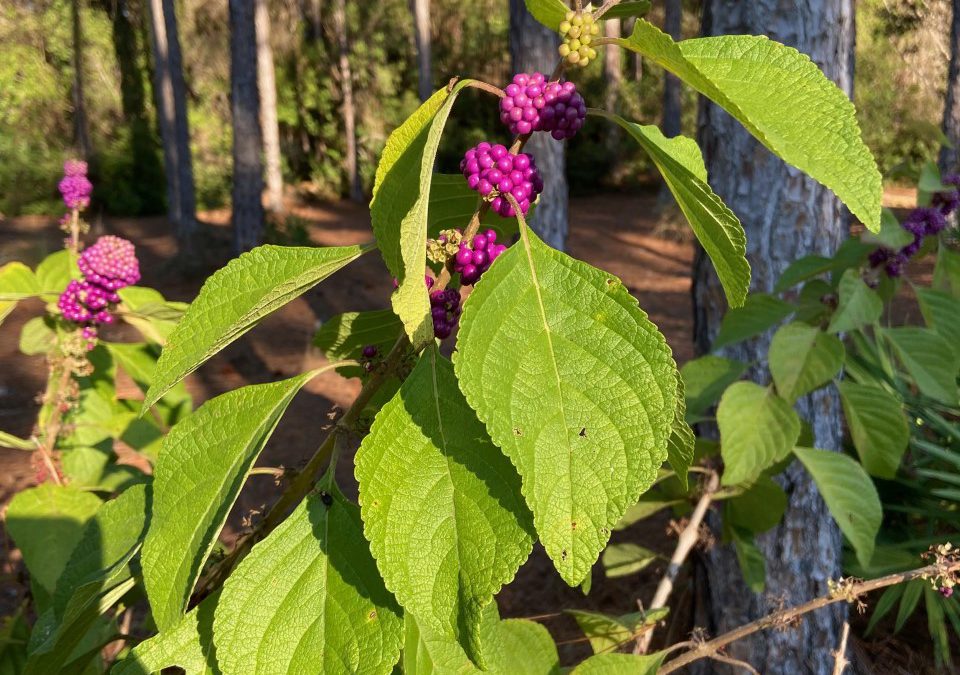
by Stephen Greer | Nov 4, 2021
Many of the native plants in the Northwest Panhandle of Florida are often placed into landscapes as backdrop support plants. Many bring the solid green color to emphasis other colorful plants. What is often missed is the opportunity to see the fall color palate of these plants. Sometimes the easiest thing to do is travel to the nearest nursery to purchase annuals and perennials that come from all over the world and have been time tested to determine their invasiveness outside of planting areas and are determined to be at a minimal risk of colonizing outside of their intended planting area.
Native plants may not be in the thought process and are often overlooked for their exceptional color that can be a focal point in the landscape. Several native plants bring multi-colored leaves or flowers adding fall interest for all to enjoy. Let us take a moment and look at just a few of the plants that can be found in the Florida Panhandle that offer the many colors you may be looking to utilize in your landscape.
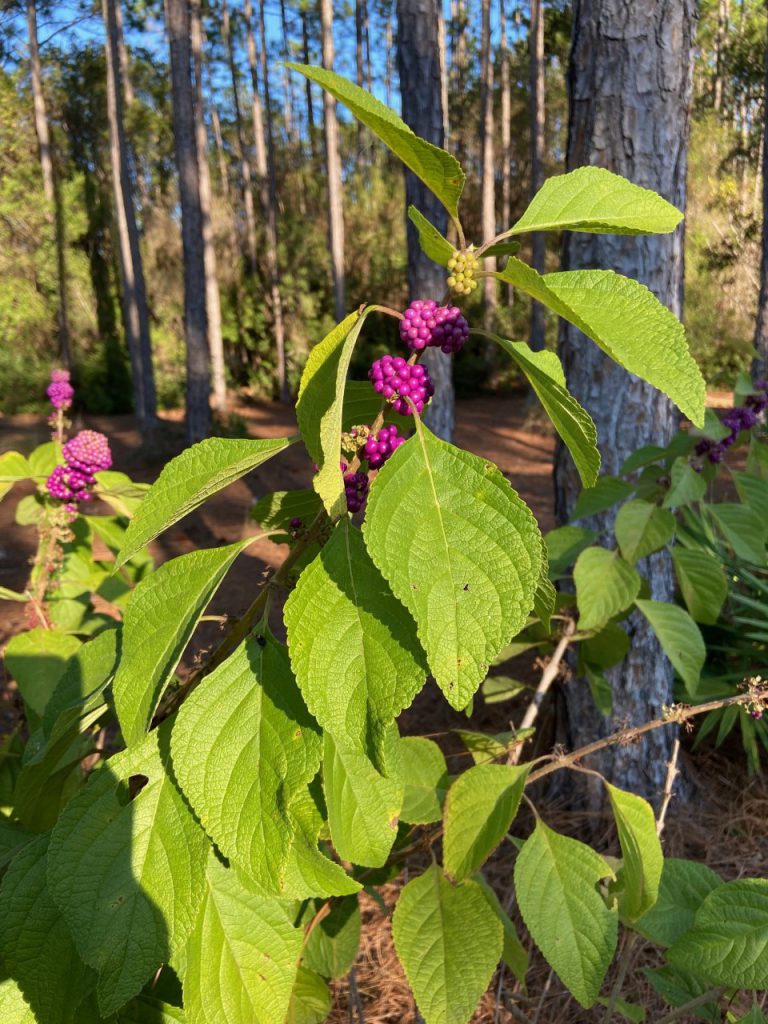
American Beautyberry (Callicarpa americana). Photo courtesy: Stephen Greer, University of Florida/IFAS Extension – Santa Rosa County
American Beautyberry
Beautyberry has two wonderful display times each year. In the late spring to early summer petite light colored lavender flowers open in small clusters along the upright stems of the plant. This flowering can be a brief soft show for a few weeks. The big color show comes in the fall with colorful shiny purple fruit clusters known as drupes. The fruit clusters around the stems of the plant in groups of 20 plus drupes. Often you will see multiple clusters on a given stem spaced approximately 3 to 4 inches apart in the beside the leaf petiole area.
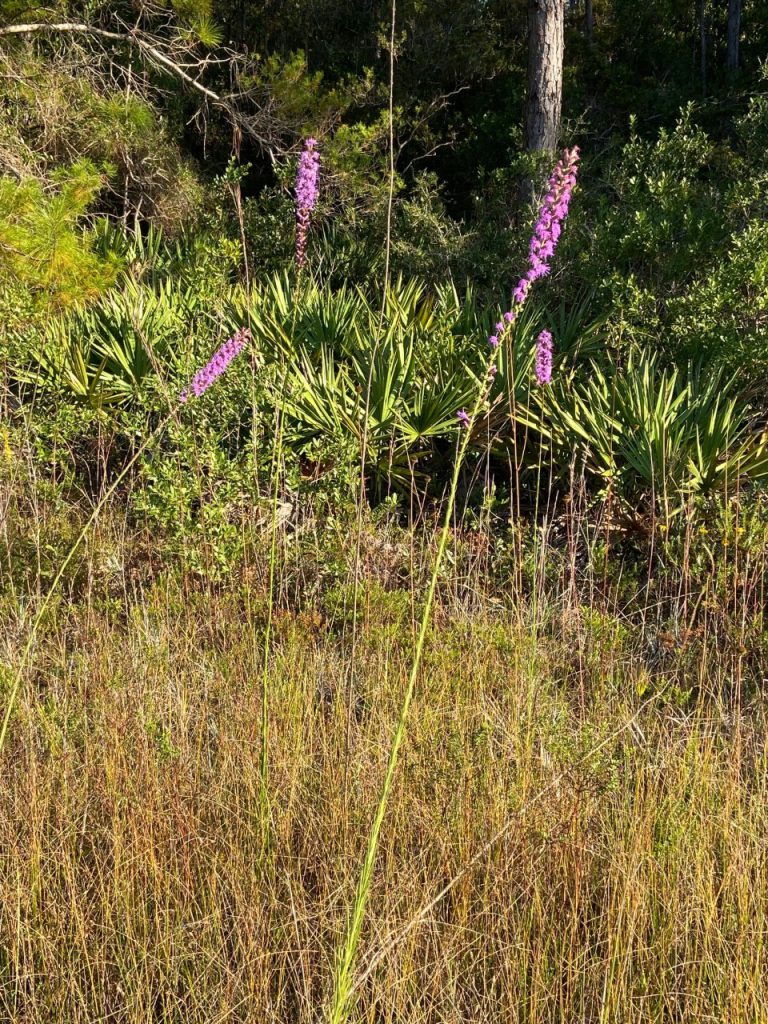
Blazing Star (Liatri spicata). Photo courtesy: Stephen Greer, University of Florida/IFAS Extension – Santa Rosa County
Blazing Star
Blazing star is another fall beauty that creates a great vertical flower floret display of tall spires showing a pleasant medium lavender color. The clustered small flowers provide color in the garden for several weeks. This pollinator plant attacks Monarchs and Swallowtails butterflies plus others adding more enjoyment to the garden. For quality establishment and growth, it needs well drained soil, yet soils that are not high in fertility. Overly fertile soils will over stimulate flower stem growth that will grow too tall and flop over. Blazing star can be divided once it is established and has expanded through underground stem growth creating a wider plant base. In sandy soil sites that have been disturbed through clearing this plant will often establish through seed from adjacent plant settings.
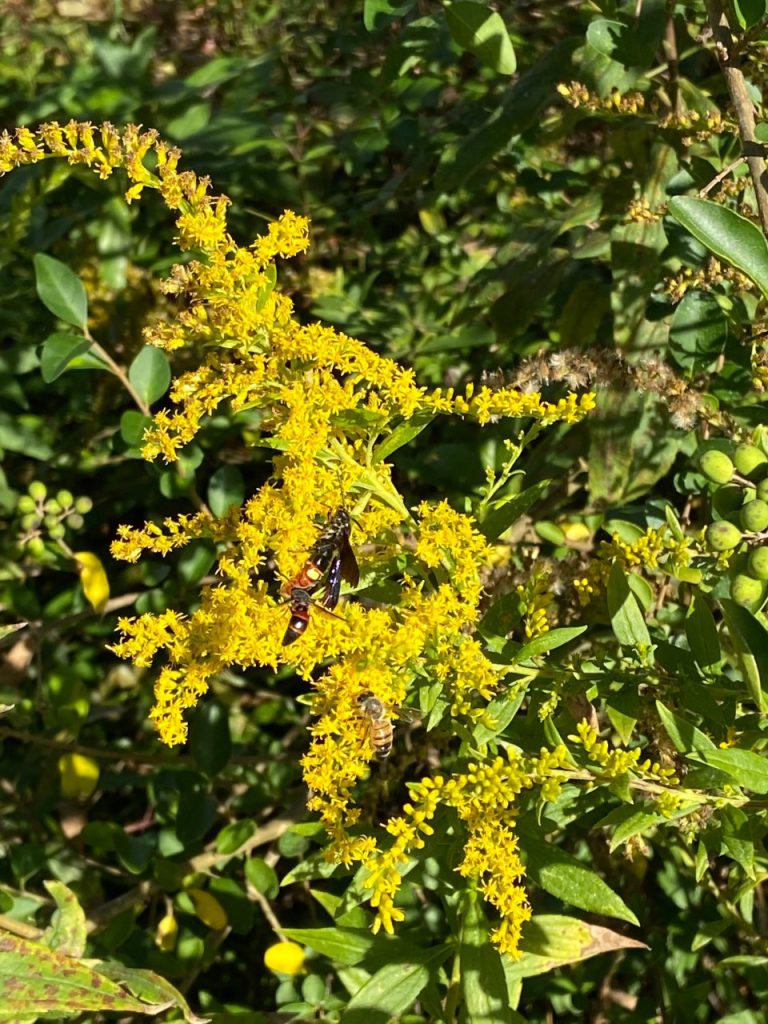
Golden Rod (Solidago spp.). Photo Courtesy Stephen Greer, University of Florida/IFAS Extension – Santa Rosa County
Golden Rod
One of the stronger colors of fall is yellow and the native Golden Rod is a big contributor with its upright stems holding multi-clusters of small bright yellow blooms. This plant serves as a pollinator plant for butterflies, bees and other beneficial insects. Often associated with fall allergies, this plant is not likely the culprit as the pollen is heavy and does not blow on the wind as ragweed will do. Ragweed blooms around the same time and does not have a showy bloom, yet many suffer from allergic reactions to this plant making it the likely problem plant for allergy sufferers. Golden Rod tends to colonize and crowd out other native plants so don’t hesitate to thin out the plant area if it is expanding too quickly.
Growing native plants including fall flowering selections is a fun journey for all to enjoy as the cool hints of fall weather moves in. Do a little research and keep in mind there is an Extension office in every county to assist in addressing your gardening needs.
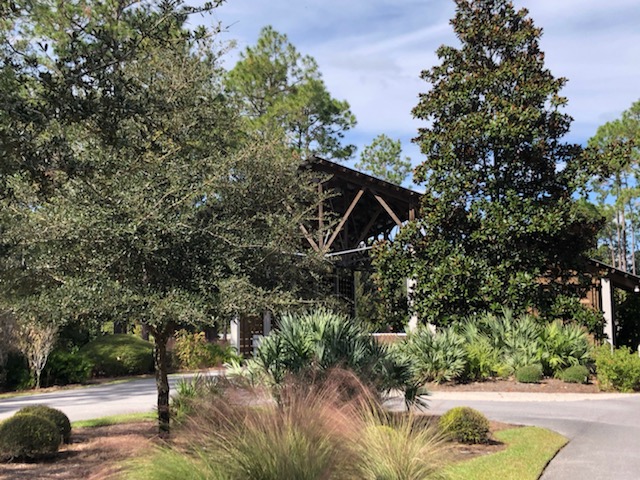
by Stephen Greer | Mar 11, 2021
Landscaping with native plants brings opportunities and challenges while adding diversity and beauty to the home. There are many factors that come into play to successfully grow plants. As gardeners, we all want things to look exceptional for all to enjoy. Native plants have evolved over long periods of time naturally in a given region without intervention, bringing much needed diversity to natural areas and landscapes. A big plus for natives are the flowers presented for the local bee populations and other pollinators assisting in the continuation of the plant species potentially established over thousands of years.
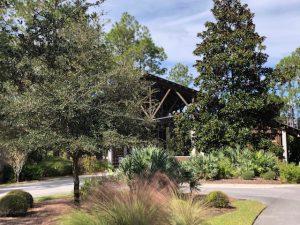
Landscape of Native Plants. Photo Credit: Stephen Greer, UF IFAS Extension Santa Rosa County
Native plants have evolved in natural communities and are found to be interdependent not only plant to plant yet with soil type, soil microbial activity through bacteria and fungus, specific site location and others though biodiversity of these living communities. Part of this community is often referred to as the soil web creating the connections of billions upon billions of organisms in the critical survival of the plants, insects and other animals we see. The first steps when considering native plants for your landscape are to do your research and contact your local Extension office. Some questions to consider may include: Does it grow best in well drained sand or wet soils or require high in organic matter? Will full sun, part-shade to full shade be needed?
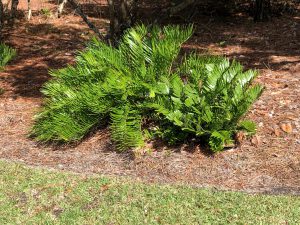
Coontie Palm in Landscape. Photo Credit: Stephen Greer, UF IFAS Extension Santa Rosa
Plants that are native and non-native are often seen in the same landscape setting. Consideration should be taken to determine if either of the groups are aggressive in expanding beyond the intended plant setting. Before moving on, non-native is in reference to plants that are introduced to a plant community that came from a totally different plant location. An example of that location being hollies from southeast Asia or South America or even a different area of the United States. Many have been researched and observed for many years under managed situations before being introduced into the local landscape nursery markets. Once in a while a plant is introduced that has not gone through a long rigorous study and can become naturalized outside of its normal plant zones and establish as an invasive species. This highly adaptable aggressive habit can, and often will colonize a given location out competing the native plants. Kudzu is a good example of an invasive exotic plant that is naturalized in the southeastern U.S.
As gardeners there are opportunities to have positive impacts on some of these diminished native habitat areas that can be threatened by growth of urban and rural areas in Florida. Establishing native plants areas into the landscape with proper soil preparation, managed water needs and more gives that chance for this interdependent system of plants, animals and nonliving elements to remain established with big impacts.
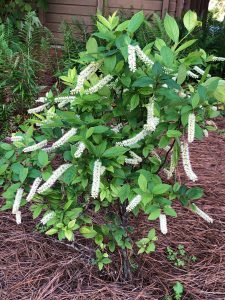
Virginia Sweetspire. Photo Credit: Stephen Greer, UF IFAS Extension Santa Rosa County
Native plants can be a working part of the garden from wonderful flowers, season color change, leaf foliage of multiple sizes and shapes to feed the insects that feed the birds, leaves and nuts that feed so many other animals for us to enjoy seeing. Balance is such a big part of being a successful gardener. Remember not all native plants are suitable for landscape spaces, do your research and ask for assistance from the experts to determine if it is the right plant for the right place.
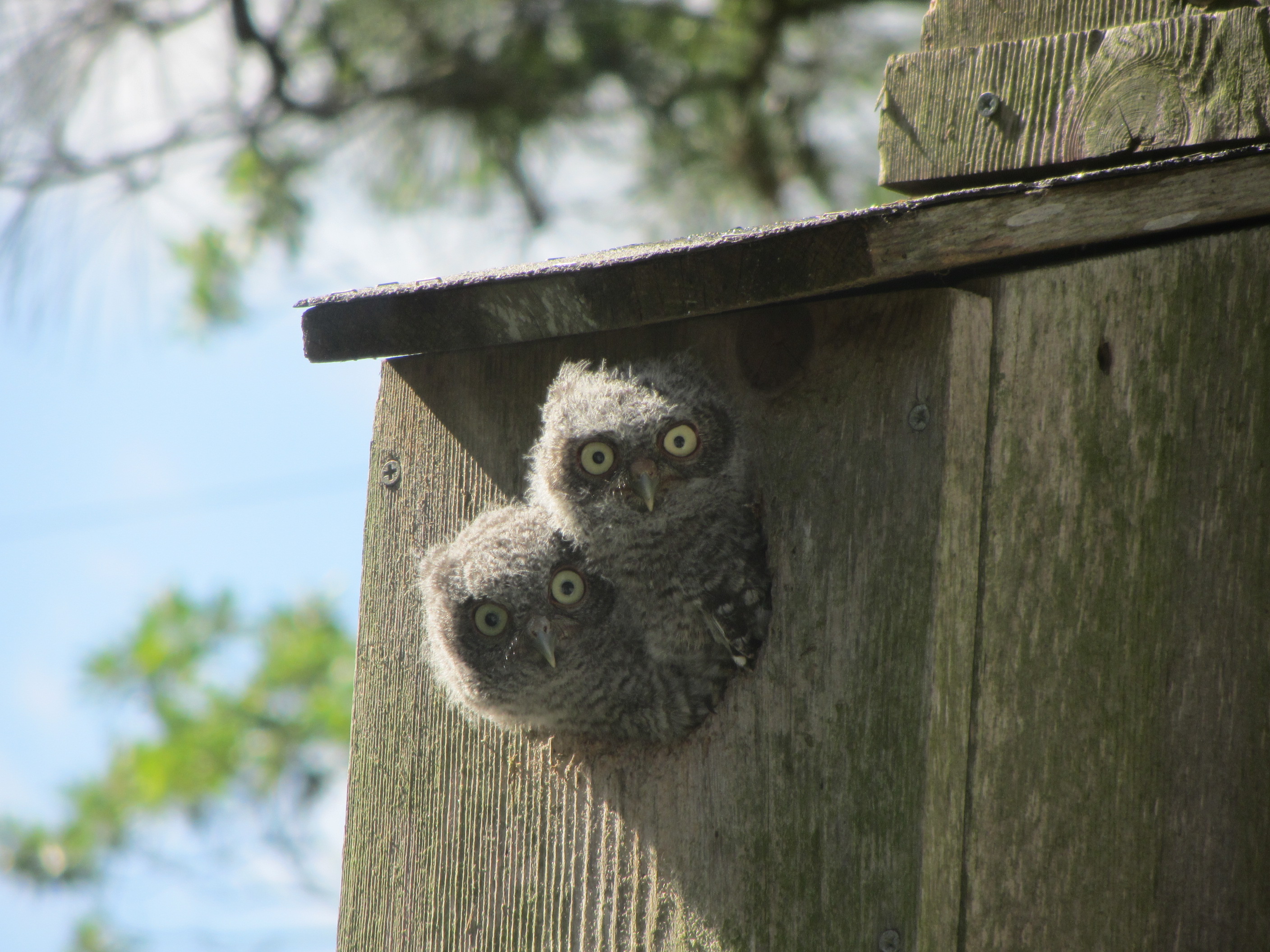
by Carrie Stevenson | Aug 10, 2018
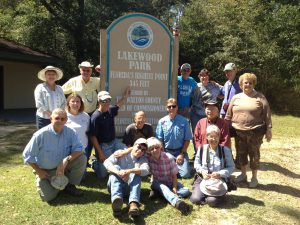
A Florida Master Naturalist Uplands class visits the highest point in Florida, located in Walton County. Photo credit: Carrie Stevenson, UF IFAS Extension
For many Floridians, gardening is a window into learning the cycles of the natural world. Understanding pollination, distinguishing beneficial insects from harmful ones, creating compost, or knowing what time of year to apply iron supplements are important for a gardener to be successful. While we have our share of campers, hikers, and kayakers, over the years Extension agents have found that some of our best Master Naturalist students are those with fond memories of farming or gardening as children or adults.
If you have always been fascinated by the natural world and how plants, animals, and people interact, you might be a perfect candidate for the Master Naturalist program. Offered periodically in almost every county in Florida, this adult educational course combines classroom sessions with field instruction, typically over a six-week period. At graduation, students present an original project, which may vary from creating an exhibit, a children’s book, or even an environmental non-profit organization.
Master Naturalist students vary in backgrounds from retired military and teachers to park rangers and college students. Many Master Gardeners find the courses a helpful addition to their training, and utilize their newly gained knowledge when working with clientele. At completion, students receive an official Florida Master Naturalist certificate, pin, and patch.
The traditional 40-hour courses cover Upland, Coastal, and Freshwater Wetland habitats, while the newer “special topics” cover Conservation Science, Environmental Interpretation, Habitat Evaluation, and Wildlife Monitoring. A new “restoration” series has begun with the Coastal Restoration class, which kicked off in Escambia and Santa Rosa counties and is currently being taught in Bay. Extension agents will be offering several classes in the Panhandle this fall—check out the FMNP registration site to see when a class will be offered near you!
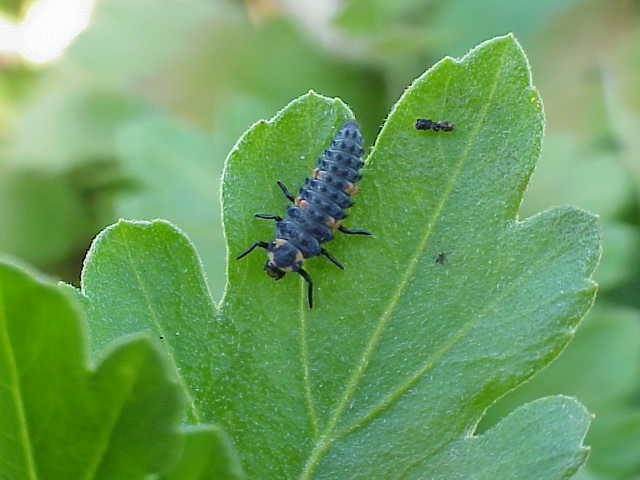
by Beth Bolles | Aug 26, 2015
It would seem that landscapes are filled with pests ready to devour our favorite plants. We can often see evidence of pest damage in the form of leaf curls, stippled leaves, or chewed holes in foliage. How do plants survive with all the pest threats without intervention from people?
Many plants have their own alert system to help manage a plant-feeding insect attack. When tissues are damaged by plant feeders, the plant releases volatile chemicals that serve as signals for many beneficial insects. Predators such as lady beetles, lacewings, and predatory bugs ‘pick up’ the chemical signals and fly to the injured plants to find their prey.
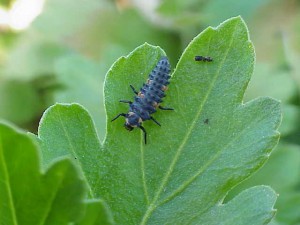
Ladybeetle larvae will eat many soft-bodied pests.
An interesting part of this occurrence is that the release of chemicals by one plant can stimulate other surrounding plants to build up their chemical defenses against future pest feeding.
The key lesson for all gardeners is that there are many natural processes going on without our knowledge. Instead of immediately applying a broad-spectrum insecticide at the earliest sign of pest feeding on a plant, give the predators a chance to provide you with a free and environmentally sound form of pest control.












